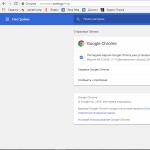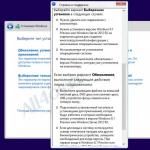6.1. Traffic lights use green, yellow, red and white-lunar light signals.
Depending on the purpose, traffic light signals can be round, in the form of an arrow(s), a silhouette of a pedestrian or a bicycle, or X-shaped.
Traffic lights with round signals may have one or two additional sections with signals in the form of a green arrow(s), which are located at the level of the green round signal.
6.2. Round traffic lights have the following meanings:
- GREEN SIGNAL allows movement;
- GREEN FLASHING SIGNAL allows movement and informs that its validity period is expiring and a prohibitory signal will soon be turned on (digital displays can be used to inform drivers about the time in seconds remaining until the end of the green signal);
- YELLOW SIGNAL prohibits movement, except for the cases provided for in paragraph 6.14 of the Rules, and warns about the upcoming change of signals;
- YELLOW FLASHING SIGNAL allows traffic and informs about the presence of an uncontrolled intersection or pedestrian crossing, warns about danger;
- RED SIGNAL, including flashing, prohibits movement.
The combination of red and yellow signals prohibits movement and informs about the upcoming activation of the green signal.
6.3. Traffic light signals, made in the form of red, yellow and green arrows, have the same meaning as round signals of the corresponding color, but their effect extends only to the direction(s) indicated by the arrows. In this case, the arrow allowing a left turn also allows a U-turn, unless this is prohibited by the corresponding road sign.
The green arrow in the additional section has the same meaning. A switched off signal of an additional section or a switched on red light signal of its outline means that movement in the direction regulated by this section is prohibited.
6.4. If a black contour arrow(s) is applied to the main green traffic light signal, it informs drivers about the presence of an additional section of the traffic light and indicates other permitted directions of movement than the additional section signal.
6.5. If a traffic light signal is made in the form of a silhouette of a pedestrian and (or) a bicycle, then its effect applies only to pedestrians (cyclists). In this case, the green signal allows, and the red signal prohibits, the movement of pedestrians (cyclists).
To regulate the movement of cyclists, a traffic light with round signals of reduced size, complemented by a white rectangular plate measuring 200 x 200 mm with a black bicycle image, can also be used.
6.6. To inform blind pedestrians about the possibility of crossing the roadway, traffic light signals can be supplemented with an audible signal.
6.7. To control traffic vehicles On lanes of the roadway, in particular on those where the direction of movement can be reversed, reversible traffic lights with a red X-shaped signal and a green signal in the form of an arrow pointing downwards are used. These signals respectively prohibit or allow movement in the lane above which they are located.
The main signals of a reversible traffic light can be supplemented by a yellow signal in the form of an arrow, tilted diagonally down to the right or left, the inclusion of which informs about the upcoming change of signal and the need to change lanes to which the arrow points.
When the signals of the reversing traffic light, which is located above the lane marked on both sides by markings 1.9, are turned off, entry into this lane is prohibited.
6.8. To regulate the movement of trams, as well as other route vehicles moving along the lane allocated for them, single-color traffic lights with four round white-moon colored signals located in the shape of the letter “T” can be used. Movement is permitted only when the lower signal and one or more upper ones are turned on simultaneously, of which the left one allows movement to the left, the middle one allows movement straight, and the right one allows movement to the right. If only the top three signals are on, then movement is prohibited.
6.9. A round white-lunar flashing signal located at a railroad crossing allows vehicles to move through the crossing. When the flashing white-lunar and red signals are turned off, movement is permitted if there is no train (locomotive, handcar) approaching the crossing within sight.
6.10. The traffic controller signals have the following meanings:
- HANDS ARE EXTENDED TO THE SIDE OR LOWERED:
from the left and right sides, the tram is allowed to move straight, trackless vehicles straight and to the right, pedestrians are allowed to cross the roadway;
from the chest and back, the movement of all vehicles and pedestrians is prohibited.
- RIGHT ARMS EXTRACTED FORWARD:
from the left side, trams are allowed to move to the left, and trackless vehicles in all directions;
from the chest side, all vehicles are allowed to move only to the right;
from the right side and back, the movement of all vehicles is prohibited;
Pedestrians are allowed to cross the road behind the traffic controller.
- ARM RAISED UP:
the movement of all vehicles and pedestrians is prohibited in all directions, except as provided for in paragraph 6.14 of the Rules.
The traffic controller can give hand gestures and other signals that are understandable to drivers and pedestrians.
For better visibility of signals, the traffic controller can use a rod or disk with a red signal (retroreflector).
6.11. A request to stop a vehicle is made using a loudspeaker device or a hand gesture directed at the vehicle. The driver must stop at the place indicated to him.
6.12. An additional whistle signal is given to attract the attention of traffic participants.
Pedestrians who were on the roadway when the signal was given must clear it, and if this is not possible, stop on the line dividing traffic flows in opposite directions.
6.15. Drivers and pedestrians must comply with the signals and orders of the traffic controller, even if they contradict traffic light signals, road signs or markings.
If the meanings of traffic light signals contradict the requirements of priority road signs, drivers must be guided by the traffic light signals.
6.16. At railway crossings, simultaneously with a red flashing traffic light signal, beep, additionally informing traffic participants about the prohibition of movement through the crossing.
Online casinos offer free spins to both new and existing customers, as well as in the form of sign-up bonuses and repeat promotions.
How to hit the jackpot?
The multiplier can reach a value of 100.
Argo casino mirror - There is no most correct wagering system; if you are a beginner, choose bonuses with the lowest bets.
When playing for a long time, they can completely fill a special jackpot scale (called the JackPot Meter).
It can vary from x2 to x88.
The return is 94 percent.
Maximizing the number of referrals will help players receive payouts more often.
Matching pictures statistically occur in 23 spins out of 100.
Each prize chain must be on one of the 25 active lines and start from the left row.
The game will begin as soon as the gamer deposits money for the round.
In addition, avid players who want to experience bright and intense emotions can try their hand at playing for money.
- GREEN the signal allows movement;
- GREEN FLASHING the signal allows movement and informs that its duration is expiring and a prohibiting signal will soon be turned on (digital displays can be used to inform drivers about the time in seconds remaining until the end of the green signal);
- YELLOW the signal prohibits movement, except as provided for in paragraph 6.14 of the Rules, and warns of the upcoming change of signals;
- YELLOW FLASHING the signal allows movement and informs about the presence of an uncontrolled intersection or pedestrian crossing, warns of danger;
- RED a signal, including a flashing one, prohibits movement.
- Combination RED And YELLOW signals prohibits movement and informs about the upcoming turning on of the green signal.
What does a flashing green traffic light mean?
To inform drivers about the upcoming change of the green traffic light to yellow, the Rules provide for the possibility of flashing the green signal. This signal allows the vehicle to move. The blinking duration should be 3 seconds.

A green traffic light allows you to turn left. Tram traffic at this intersection is regulated by a single-color traffic light in the shape of the letter “T”. Considering that with such a signal the tram is prohibited from moving, you can pass the intersection first.
In what case are you obliged to give way to a tram?

The turned on turn signal informs you that the paths of your car and the tram intersect at an intersection. Considering that this traffic light simultaneously allows you and the tram driver to move, you are obliged to give way to the tram.
You intend to turn left. What are your actions?

A green traffic light gives you the right to move left. In this case, you must drive in the intended direction regardless of the traffic light signal at the exit from the intersection.
You intend to turn left. What are your actions?

A green traffic light gives you the right to move left. But, since at this intersection there is a stop line in front of the traffic light installed on the dividing strip, you must stop in front of it and wait for the green signal.

| 1. | Give way to the tram. | |
| 2. | Go through the intersection first. |
The turned on tram turn signal informs you that the paths of your car and the tram intersect at an intersection. Considering that the green traffic light allows you to go straight, and the tram traffic light in the shape of the letter “T” prohibits the tram from turning right, you can pass the intersection first.
You intend to drive straight through the intersection. What are your actions?

A green traffic light gives you and oncoming vehicles the right to move. In this case, you must give way only to the tram. An oncoming passenger car is not allowed to pass through the intersection together with a tram.
What does a flashing yellow traffic light mean?
A yellow flashing signal warns of possible danger and is used to indicate an unregulated intersection or pedestrian crossing.
When turning left you:

A green traffic light gives the right to move to all vehicles. But when turning left, you must give way to a tram, which has priority over trackless vehicles, as well as to an oncoming passenger car (traffic rules 13.4).
A red flashing signal or two alternately flashing red signals of a traffic light installed at a railway crossing means:
A red flashing signal or two alternately flashing red traffic lights prohibit movement. This type of signaling is mainly used at railway crossings.
You intend to turn left. Who should give way to?

A green traffic light gives you and oncoming vehicles the right to move. At the same time,
All that is required of the driver is to track in advance which signal came on at the traffic light at the moment you entered the intersection. If the situation requires investigation, the moment when the car began to enter the intersection is taken into account, and not what signal was on during the passage.
For vehicles that can no longer stop because they have already entered the roadway, provisions are provided in clause 6.14 of the traffic rules. In this case, sanctions for violation depend on how the traffic police inspector treats the situation.
Useful video
Conclusion
Good knowledge of traffic rules is necessary for any driver– It’s not for nothing that the requirements in driving schools are quite serious. If you know how to navigate them well, you reduce the risk of developing undesirable situations on the roads and reduce the risk of injury for participants traffic.
Even basic politeness towards other drivers and pedestrians requires knowledge of the rules. By updating your knowledge in a timely manner, you will be able to avoid mistakes when driving. Correct interpretation of traffic rules is mandatory for every driver.
If you find an error, please highlight a piece of text and click Ctrl+Enter.
Traffic lights come in various configurations. Each individual case has its own rules for orientation according to the instructions of the device.

Three-section
The standard configuration of a three-section device assumes the presence of three colors:
- green- passage is allowed. In a flashing state, it warns that the signal will switch soon;
- yellow. In a stable burning condition, passage is prohibited. Passage is permitted if the driver crosses the road lane and does not have time to stop the car before the marking. When yellow is flashing, movement is allowed. It also indicates a malfunction of the device;
- red– passage is prohibited when the signal is constantly lit or flashing.
The segments are arranged in order from bottom to top or left to right. Three-section devices are most often installed at intersections, as they are able to regulate the movement of vehicles in all directions. Their placement is possible at controlled crossings that are located between intersections.
Also, traffic lights of this type are installed at railway crossings, at the intersection of a road with a bicycle path or tram tracks.
Two-piece
Devices with two sections regulate the passage of vehicles in places where the roadway narrows, as well as in the territories of enterprises. With their help, you can organize a single-lane reverse traffic flow. There are only two signals available: red and green. Their meaning is the same as in a three-section device.
With additional section
There is a traffic light configuration with additional sections equipped with arrows or their outlines. With their help, traffic flow is regulated in a specific direction. When a specific arrow segment is activated, travel in a given direction is either allowed or prohibited. For example, a green arrow allows passage, but it does not provide an advantage when driving.

Single section
A device with one section is installed at pedestrian crossings and unregulated intersections or in the territories of closed enterprises. They are used as an addition to traffic lights. Single-section devices effectively distribute traffic flows. Often their segments include a countdown board.
The green arrow informs you that it is possible to turn in the indicated direction. Using the device allows you to increase throughput intersections and reduce the risk of accidents.
Reversible
Reversible traffic lights are used on roads where traffic can flow in one direction or the other. The direction is determined based on the degree of congestion of the roadway.
The following signals apply here:
- a red cross shaped like the letter "X". The signal prohibits passage in a certain lane;
- yellow arrow. She points to the right. The signal requires the driver to change lanes to the lane on the right side;
- green arrow. It allows travel in a specific lane.
In Russia, roads with reversible traffic are not widely used. Therefore, few drivers are familiar with the peculiarities of moving on such roads.
To regulate traffic through a pedestrian crossing
Traffic lights that regulate a pedestrian crossing usually contain only two sections. They depict a person in a standing or walking position. If the red figure is lit, then movement on the crossing is prohibited for people. You are allowed to cross the road only when the light is green.

Regulating devices are often equipped with a timer that reflects the waiting time. It also counts the time allotted for pedestrians to cross the roadway.
Some traffic lights are equipped with a special device for the deaf. When passage through the passage is allowed, a special sound signal is emitted from the speakers.
For trams
A four-cell white traffic light is used to regulate the movement of trams. It is made in the shape of the letter "T". This type of transport can only move when the lower signal is on. The upper sections indicate various directions travel
Often the railway instrument is equipped with a white lamp. It regulates the movement of vehicles through crossings. When the white light is flashing, crossing the railway line is permitted. Movement is also permitted when the white lamp is steadily lit.
The main task of a traffic light is to regulate the movement of vehicles on the roadway. Violating the instructions of the electronic traffic controller increases the risk of an accident.
Therefore, there are penalties for ignoring the device signals:
- for driving through a red signal – at least 1 thousand rubles. If the violation is repeated, the fine increases and is at least 5 thousand rubles. Possible deprivation of driving privileges for a period of 4–6 months;
- for driving on a yellow light - at least 1 thousand rubles. In case of repeated violation, the fine will be 5 thousand rubles. The driver may also be deprived of his license for a period of 4 to 6 months;
- Failure to comply with the stop line before the intersection results in a fine of at least 800 rubles. (read more about);
- entering a lane with reverse traffic when the control device is turned off - a fine of at least 5 thousand rubles. Such movement is regarded as driving into the oncoming lane;
- If you fail to change lanes on a road with reverse traffic, the fine will be at least 500 rubles.
A traffic light regulates the movement of vehicles on the road, creating comfortable and safe conditions for all its participants. The size of the fine for ignoring his signal depends on the severity of the offense, as well as the consequences for road users.





